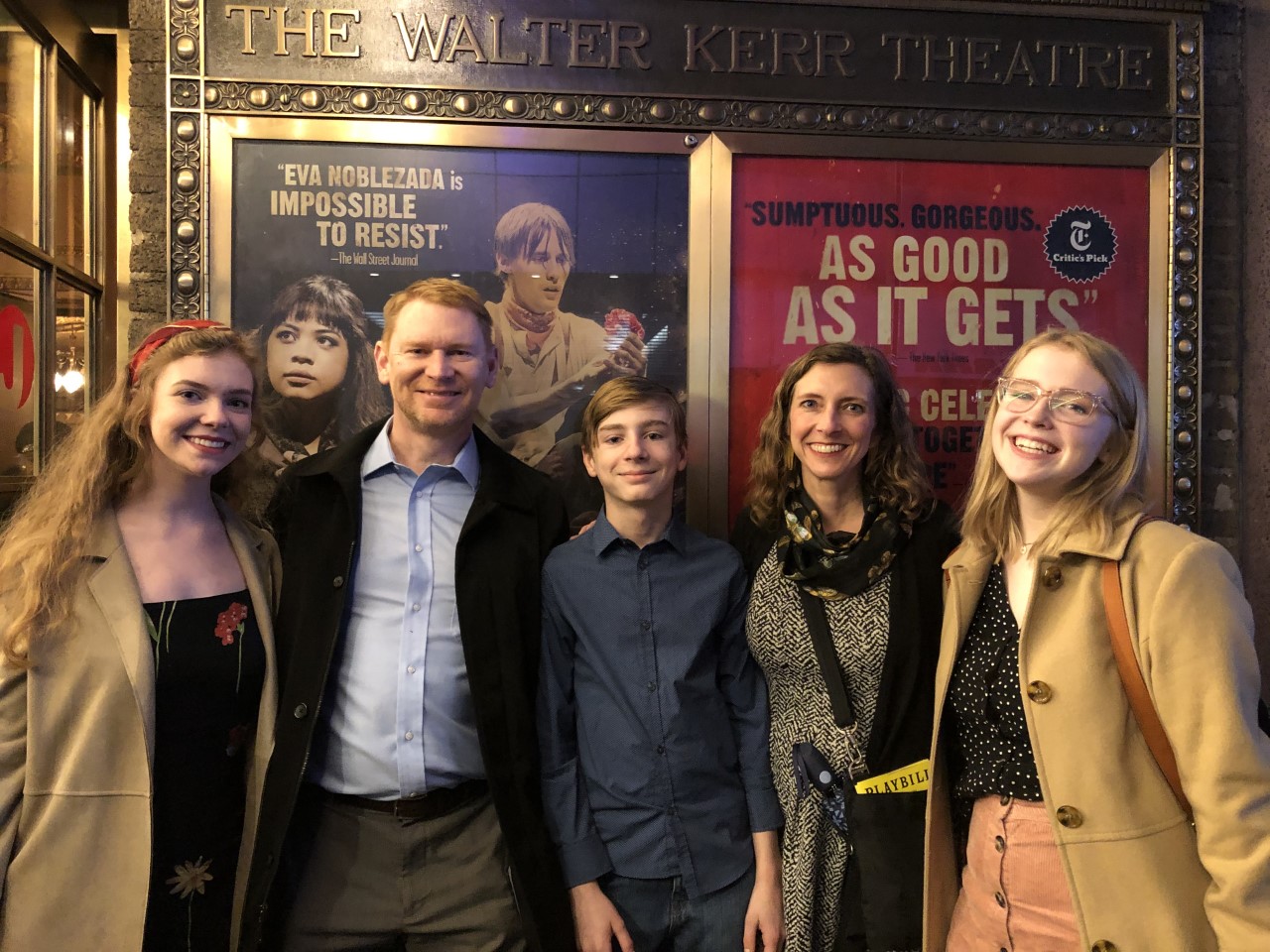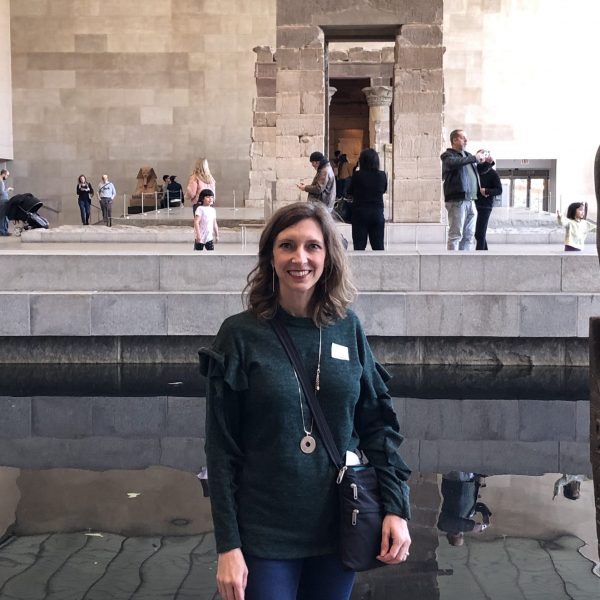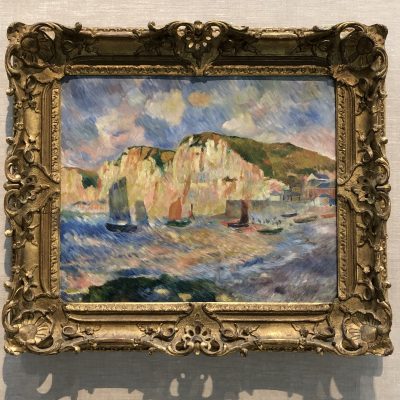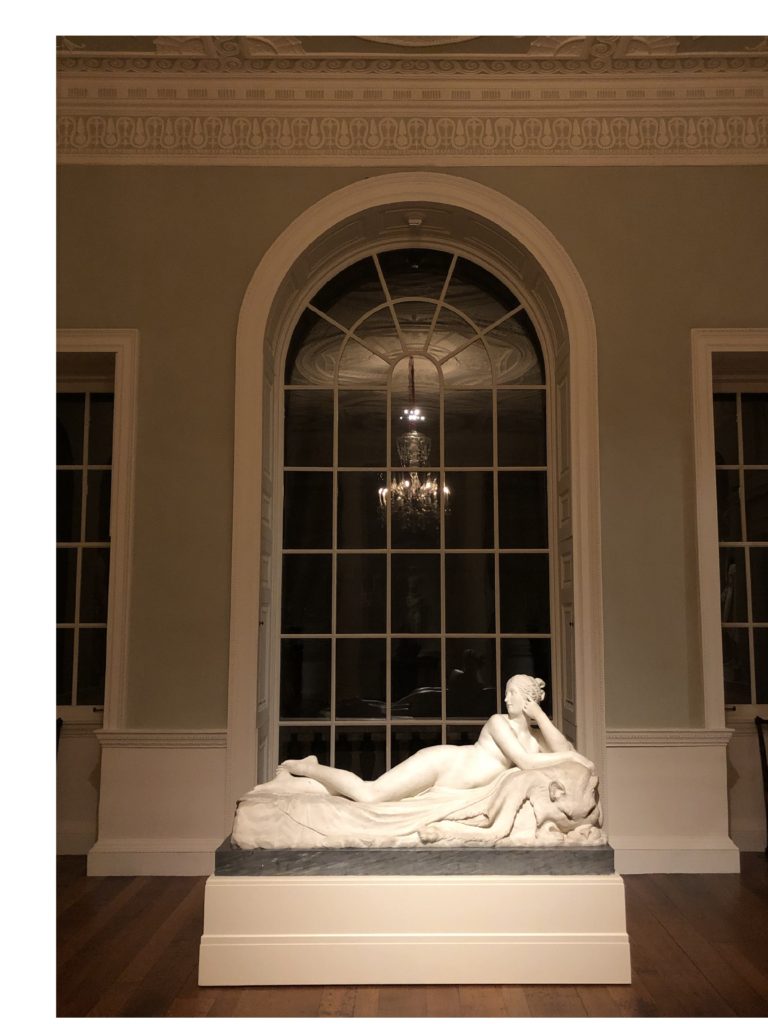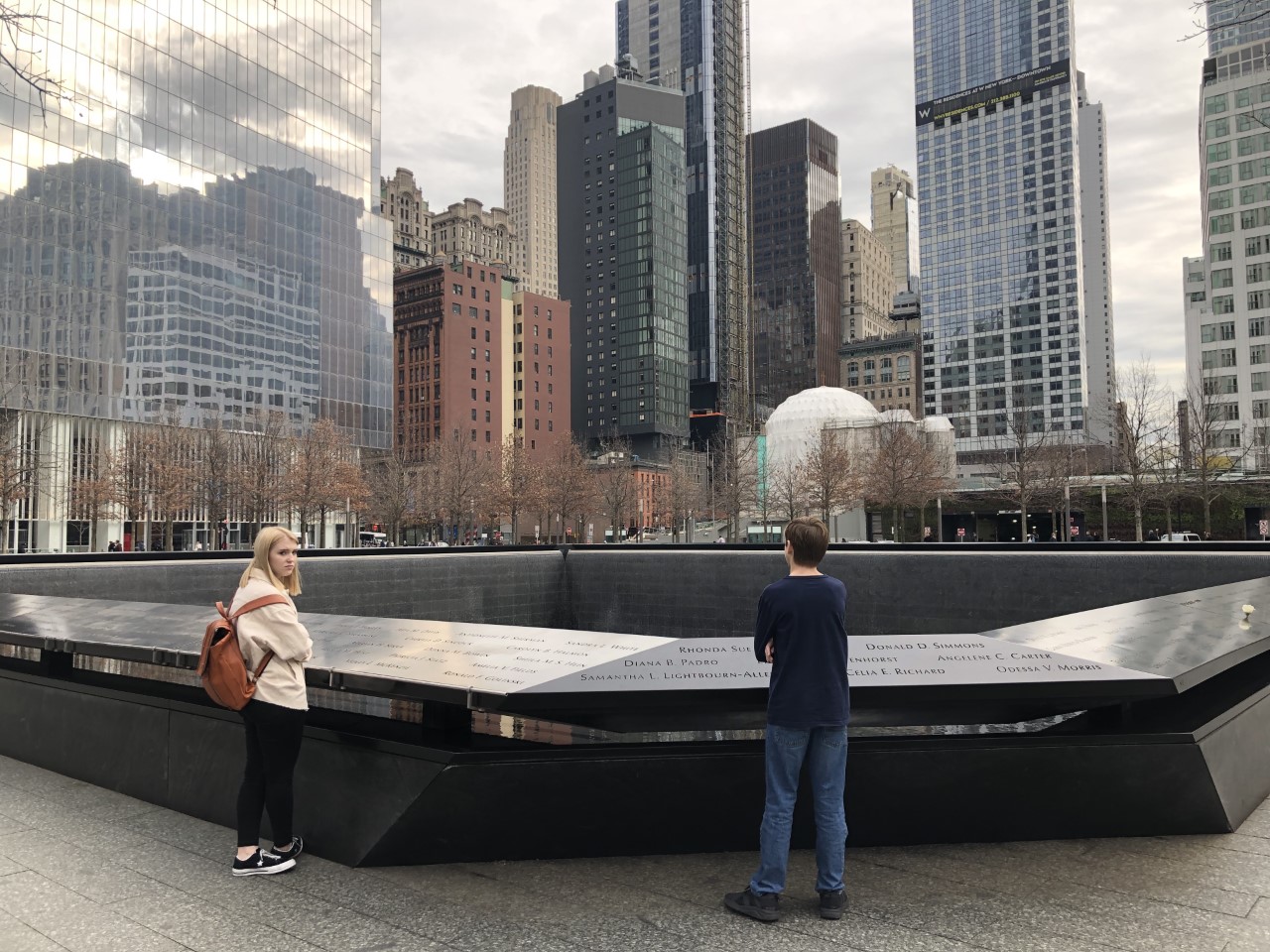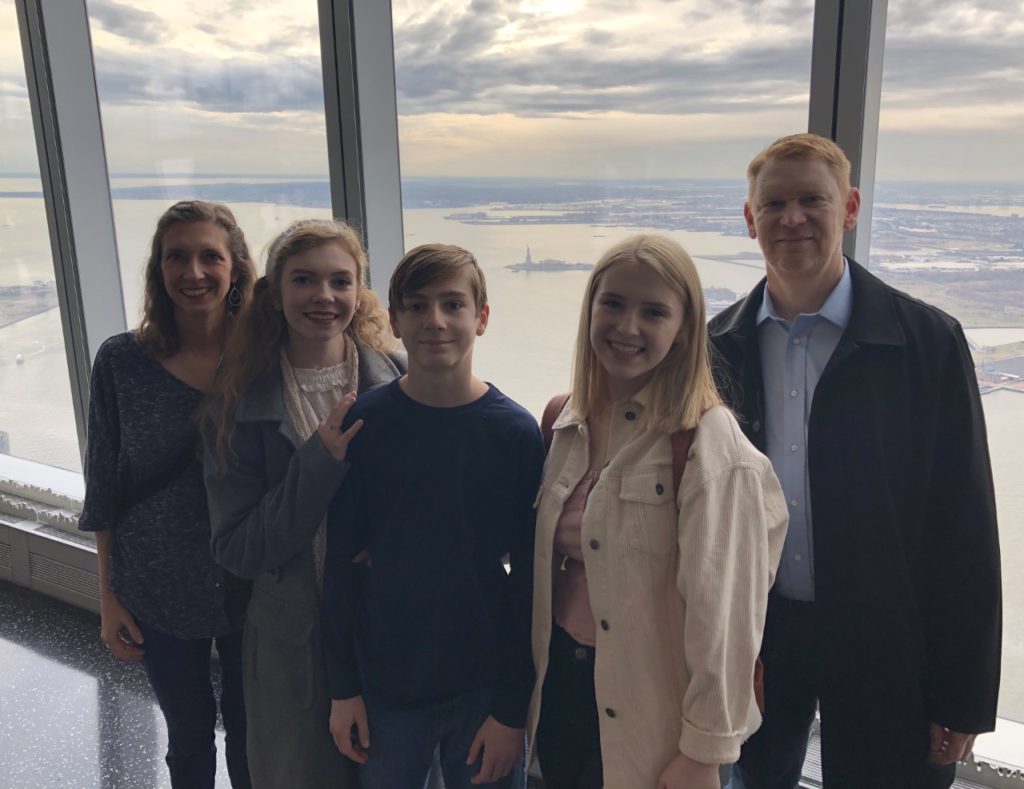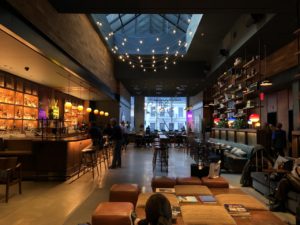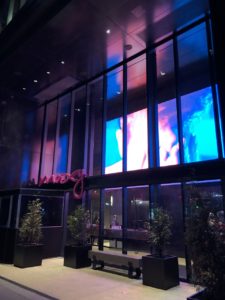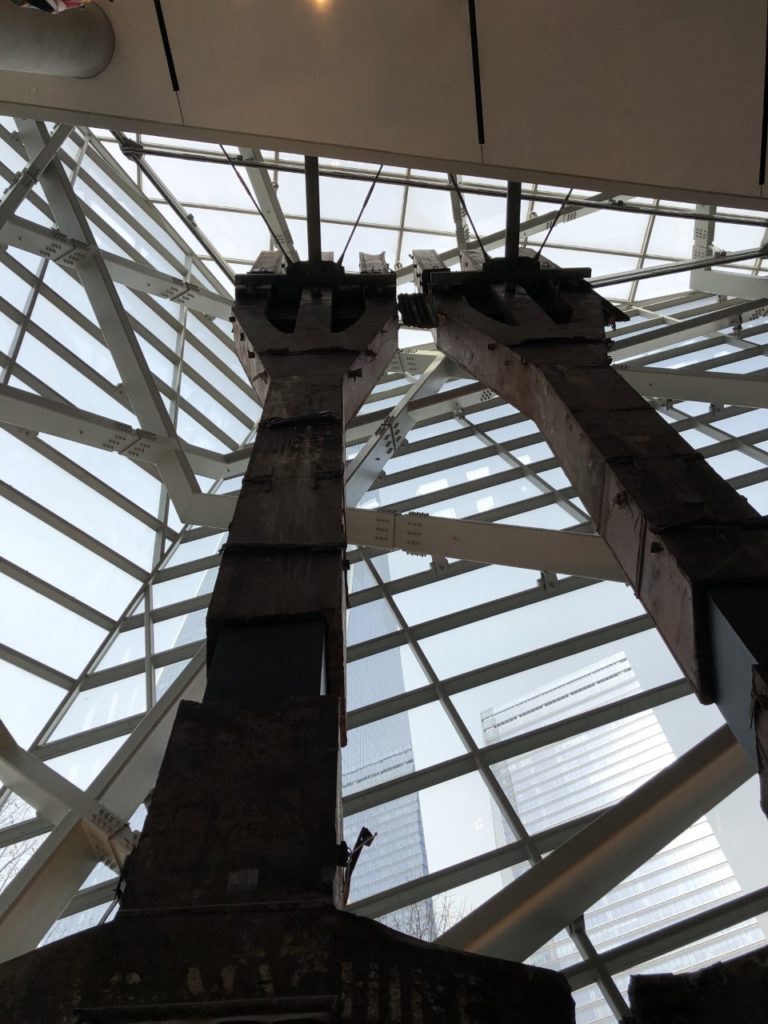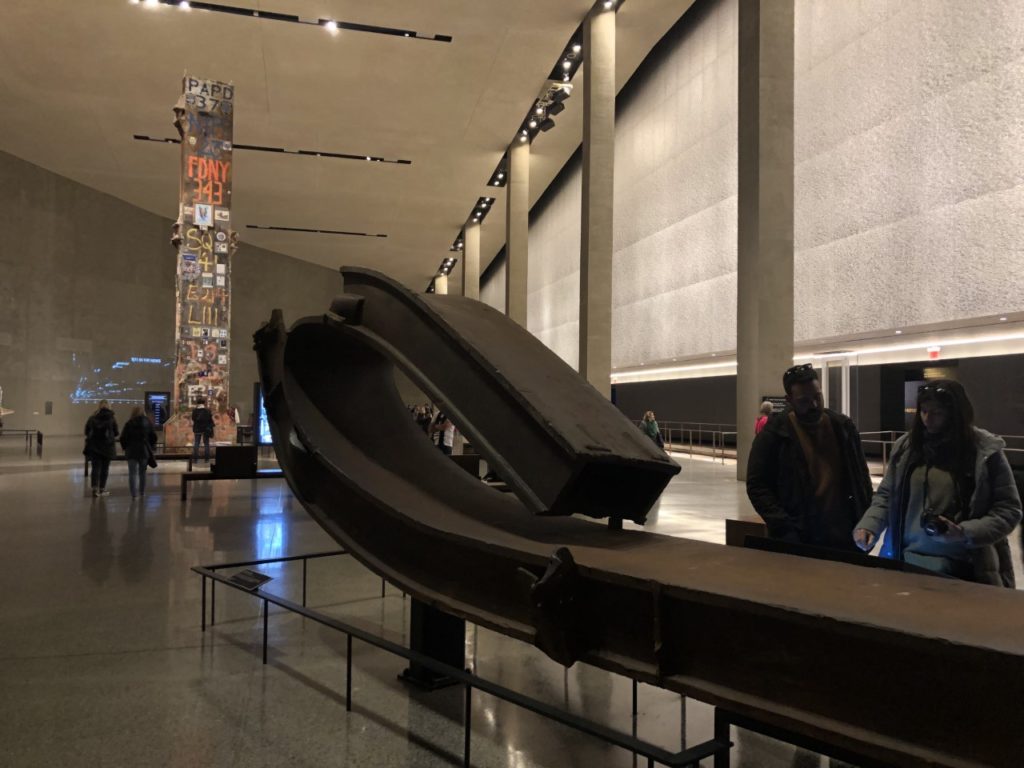We took our family with three teens to New York City for five days. Here is some information about some of our favorite places, as we look forward to the future when we will be able to visit again. You can see the status of New York’s re-opening here and check websites for specific attractions.
Ellis Island and the Statue of Liberty
Ellis Island and Statue Island are both run by the National Park Service, but the only way to reach the islands is by Statue Cruises, the authorized concessionaire. You may purchase tickets through Statue Cruises or through third party discount attraction packages listed on the Statue Cruises website, such as the New York CityPass, but we chose to purchase tickets directly through Statue Cruises. Tickets can be purchased online or in person, inside Castle Clinton National Monument inside Battery Park, at the south tip of Manhattan. However, the only way to guarantee access to the Statue of Liberty Crown and Pedestal are to purchase tickets in advance online. There are Pedestal, Crown and Hard Hat ticket options. We chose to purchase the standard Reserve Ticket for our family which includes access to the grounds of Liberty Island, the museum on the island, and Ellis Island. Access also includes audio guides on each island. Tours depart from The Battery at the tip of Manhattan in Battery Park behind Castle Clinton.
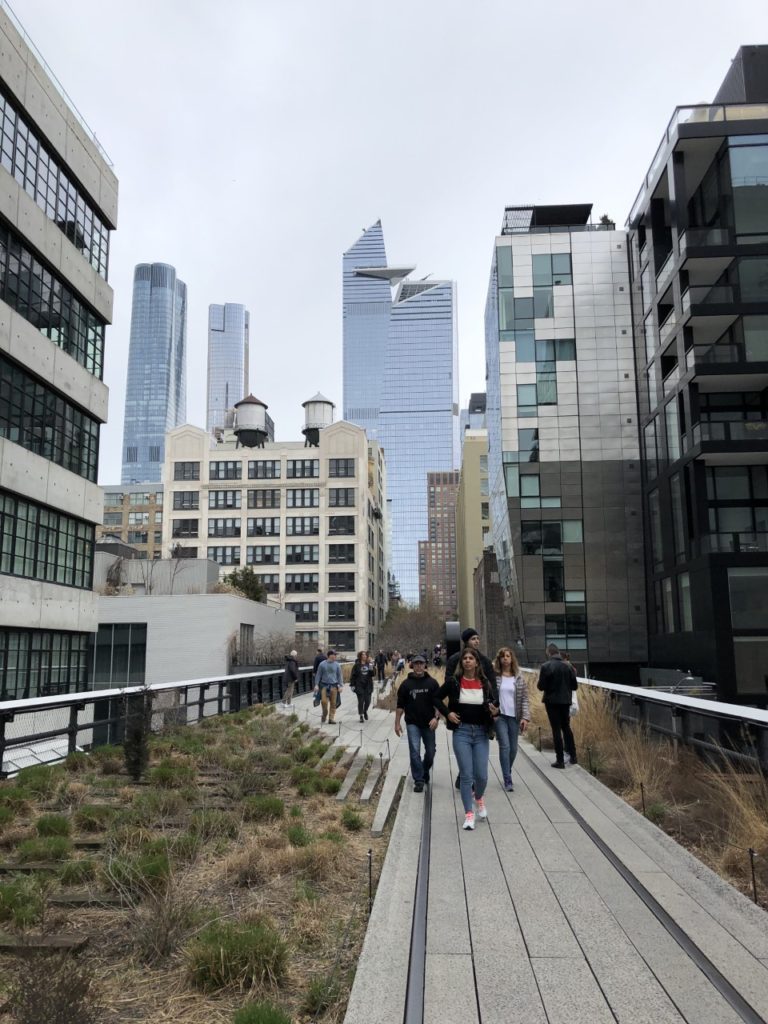
A note about Castle Clinton: it was originally an early 1800’s battery erected just of shore. By 1817 it became a place for entertainment, concerts and operas. In the 1850’s dirt landfill created Battery Park, and this newly created land put Castle Clinton on shore. If you choose to purchase tickets in person, the ticket booth is inside the structure. Once you have your ticket, security and embarkation for Statue Cruises is on the back side of Castle Clinton.
The Statue Cruises ferry ride itself is a fun experience, and there are snacks available for purchase on board. The Reserve Ticket includes access to the grounds at both islands and audio guide tours you can pick up when you arrive. There is a version for kids and a version for adults. You can choose to play the audio in any order you want, and locations are numbered according to audio tracts.
Liberty Island
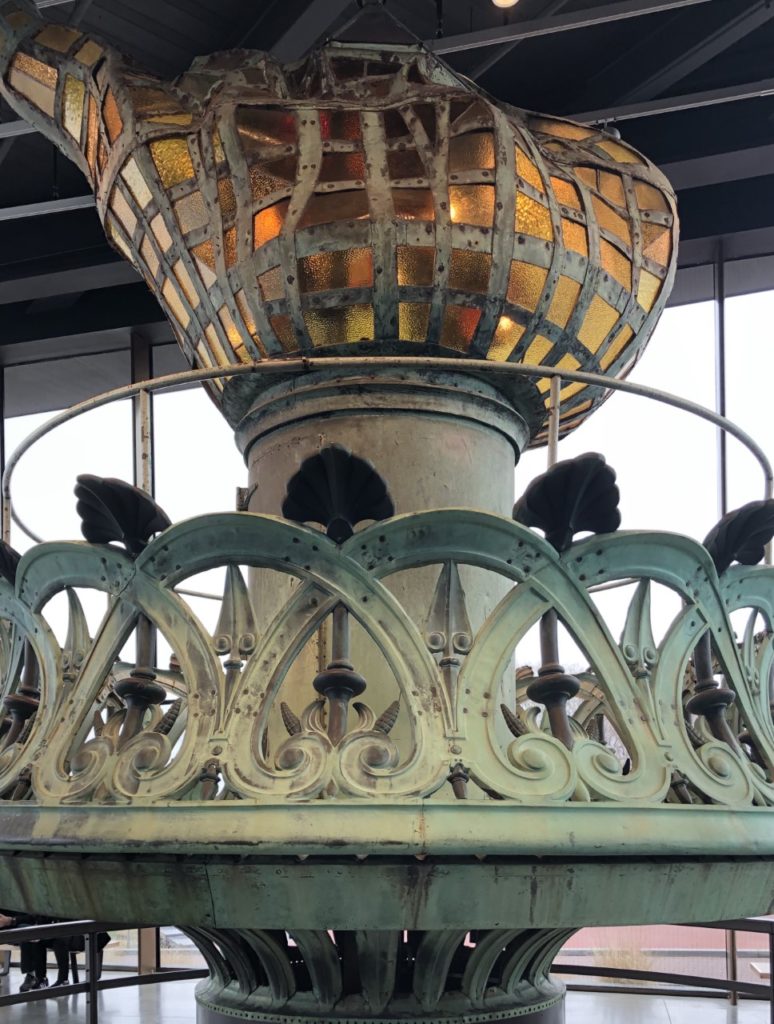
Our first stop was Liberty Island. We walked around Lady Liberty, took pictures, and enjoyed the view. The best surprise was the museum on the grounds. It was opened in May, 2019 in a beautiful modern building designed over a bunker. There is a theater inside that has an inspiring presentation on Liberty Enlightening the World and its design by Auguste Bartholdi. The museum has some great displays, including the original torch.
When you have seen everything you want to see on Liberty Island, you can board the boat to go to Ellis Island. Ferry times are posted online, but if you are not keeping track of time, the boats come fairly often. When you get in line, you may have a short wait as the boat fills on a first come first served basis.
Ellis Island
The first thing you notice about Ellis Island is the beautiful architecture of the main building. You enter through the large Baggage Room, and again audio tours are available if you choose to use them. Directly above Baggage Room is the large Registry Room on the second floor, with the third-floor balcony also looking down on the Registry Room. This is the room you’ve probably seen in photos and was the main processing room for medical and legal examinations. On all three floors smaller rooms hold extensive exhibits. Notably, the second floor has an exhibit describing the immigration process during the peak years of immigration, from 1880-1924. The third floor has an exhibit, the Ellis Island Chronicles, which houses dioramas depicting the construction of the island itself and the buildings through the years. We enjoyed the third-floor exhibit, Treasures From Home, which houses collections of items immigrants brought with them, including traditional clothing, musical instruments, household items and keepsakes.
Central Park
There is so much to see in Central Park, and it is a wonderful way to relax and wander away from the hustle and bustle of avenues famous for shopping and museums. Before you visit, you will want to look at the Central Park Conservancy website. There is an interactive map of the points of interest within the park in addition to information about amenities and activities available in the park. Some highlights you might consider visiting:
Belvedere Castle
Belvedere Castle is a small castle that sits atop Vista Rock and houses a visitor information center and gift shop. This is a beautiful place to go for a pretty view of the park.
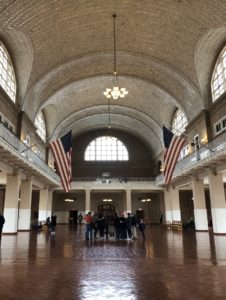
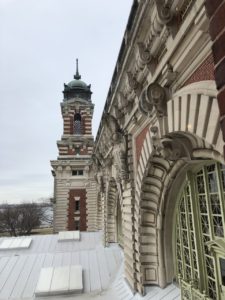
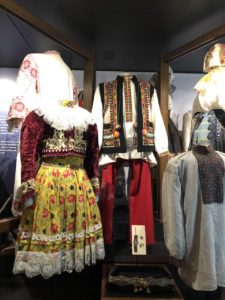
Central Park Zoo
Near the Arsenal building is a 6.5 acre zoo with separate admission fees. Areas in the zoo include a tropic zone, a temperate zone, and a polar zone.
Gardens and Lawns
There are many beautiful gardens and lawns within Central Park. For example, the Conservatory Garden is a six-acre formal garden in the northeast quadrant of the park. The Conservatory Water has small radio control boats to rent during the summer and turns into an ice skating rink in the winter.
The 55-acre Great Lawn at the very center of the park where people are welcome to lounge and play on the grass. There are several softball fields in the Great Lawn.
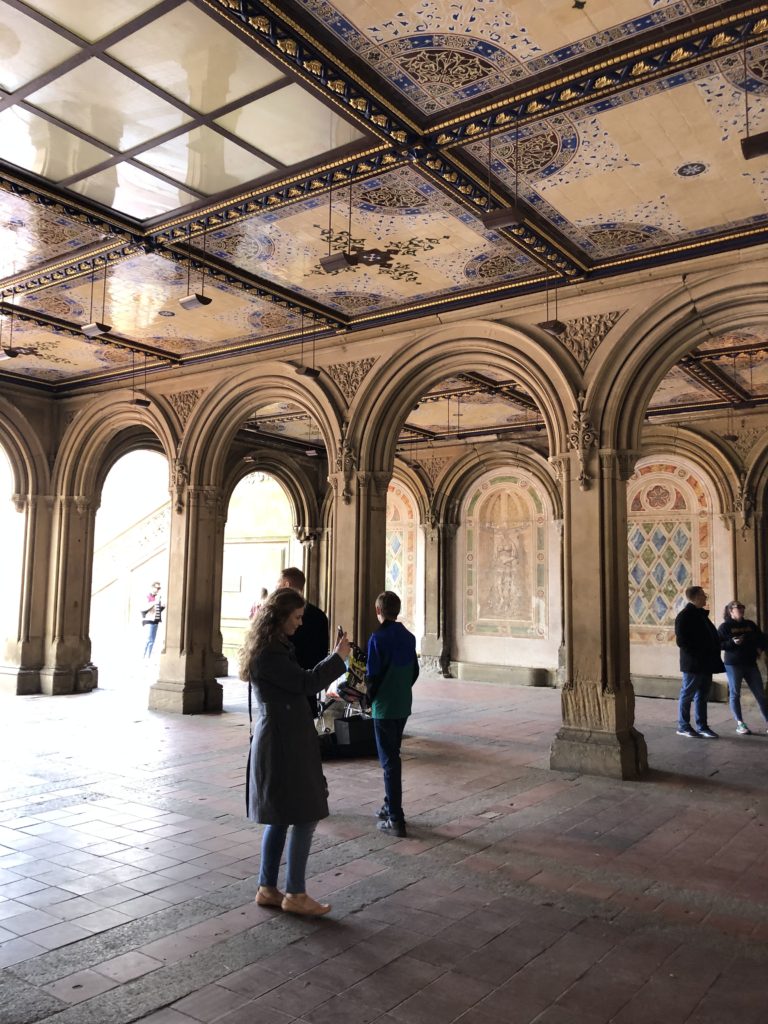
Beautiful Bodies of Water
The Lake is a 20-acre body of water in the park that curves gracefully and has the Loeb Boathouse at the east end. It is located just south of the center of the park. The Boathouse has a restaurant, bar and express café. Visitors can rent rowboats and venture out on the lake.
The Reservoir is a lake just north of the center of the park. It features a 1.58 mile track around it and views of the skyline across the vast water.
Other bodies of water include Harlem Meer at the northern end, the Pool, Turtle Pond, Conservatory Water, and the Pond at the southern end of the park.
Statues, Bridges and Fountains
Central Park is full of beautiful bridges, fountains, statues and monuments. One of the most famous statues is Alice in Wonderland at her tea party, and there is also Alexander Hamilton. On one of the quieter spots on the north end of the park sits a bench in honor of Andrew Haswell Green, who was instrumental in the unification of New York City. Duke Ellington and his baby grand stand tall near the northeast corner of the park.
The most iconic bridge in Central Park has to be Bow Bridge. It spans a narrow neck of the Lake between Cherry Hill and the Ramble. It is a beautiful, white cast-iron bridge built in 1859 and has an interconnected design of circles all along its bannister.
Bridge Number 28 is on the bridle path just north west of the Reservoir. It has a neo-gothic design, and like Bridge 27, was designed by Calvert Vaux. Vaux and Frederick Olmstead were the architects who designed Central Park. Bridges Number 24, 27 and 28 cross the Bridle Path and are best seen from below as you walk the path.
One of many fountains, and probably the most famous, is the Bethesda Fountain. It sits in front of Bethesda Terrace and has the Angel of the Waters statue at its top. She commemorates the clean drinking water of the reservoirs that put an end to Cholera in the City. Bethesda Terrace looks out over the Lake. Under the steps of the terrace is the Arcade. Walk under the Italianate arches of the Arcade and look up at beautiful 1860s Minton tile ceiling. The Conservancy removed this tile in 1983 and finally completed the cleaning, restoration and installation of the tile in 2007, for a price of $7 million.
Activities
Bikes are available for rental at either the Grant Army Plaza at the southeast corner of the park or at Merchant’s Gate Plaza at the southwest corner of the park.
Ice skating is available late October through early April at Wollman Rink on the south end or Lasker Rink on the north end of the park.
For information about other activities available in Central Park visit the Conservancy page.
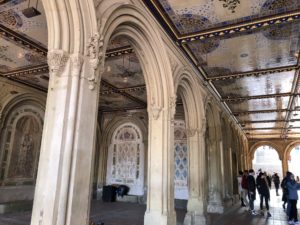
Stopping by for an hour or two...
One could spend days at Central Park, but it might be best to enjoy an hour or two near whichever part of the park is closest to other sites you plan to see. When we visited, we entered at West 72nd Street and Central Park West and crossed the park to reach the Metropolitan Museum of Art. Our stops along the way included Strawberry Fields, which is a tribute to John Lennon, and Bethesda Terrace. While we were at Bethesda Terrace we took in the beautiful architecture of the Arcade and listened to a street musician who happened to be a classically trained opera singer. She wore sweats and a t-shirt like any other person but had the voice of an angel. Listening to her, I felt like we had been transported to Tuscany!
Broadway
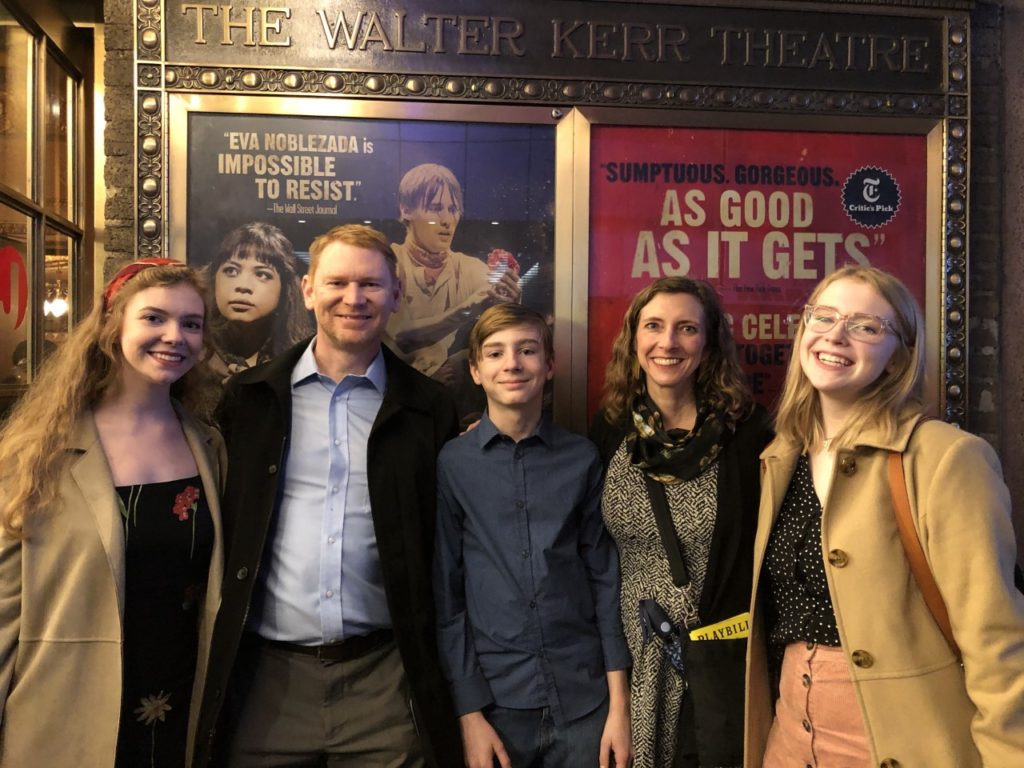
We actually went very late for dessert because we had to stay an extra hour after the show for the stage door and autographs experience! Venues will designate a roped-off area where any number of cast members come out after the show to make an appearance for fans and sign programs. My daughters were over the moon to see Samantha Pauly, who played Katherine Howard in Six. The leads do not always appear, but those who do are awe-inspiring to their fans!
While in New York, don’t forget about Broadway! When Broadway is able to re-open, surely fans will show up once again to support this paramount institution of the arts. While we were there, we went to several shows. We purchased tickets to Hadestown and Six well in advance, but my daughters were lucky enough to get last-minute tickets to Beetlejuice as well. I cannot think of a better way to spend an evening in New York than to go to an early dinner at a nearby restaurant, go to a Broadway show, and then have a late dessert afterwards.

The Metropoliltan Museum of Art
This world class museum ranks right up there at the top. It is actually the largest art museum in the United States. There is a vast collection of Egyptian art which includes the reconstructed 10th century B.C. Temple of Dendur. This temple, which originally stood near the Nile River, was a gift from Egypt to the United States when Egypt built the Aswan Dam and Lake Nasser.
The entry to the American Wing is through the reconstructed façade of the Branch Bank that sat on Wall Street. The collection features American paintings, sculpture and interior design from different periods. There are many other collections at the Met, including European painting, sculpture and decorative arts; art of Africa, Oceana and the Americas; and Greek and Roman art.
Tickets allow entry to all three Met museum locations for a three consecutive day period. The Met Cloisters exhibits medieval art and is located in Fort Tryon Park in the Washington Heights neighborhood of Manhattan. The architecture of the building replicates the style of medieval cloisters in Europe. The Met Breuer houses modern and contemporary art and is located at Madison Avenue and East 75th Street in the Upper East Side. Unfortunately, we didn’t have time to visit the Breuer or the Cloisters. But our day at the Met was amazing!
We thoroughly enjoyed being in the Big Apple. It’s an incredible city that is so connected to our American culture and history. There is so much to do and so many different neighborhoods to explore, each with its own culture and vibe. The major sites only scratch the surface. We can’t wait to return!
Please like, share, or leave a comment!


